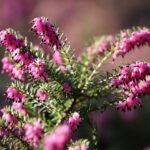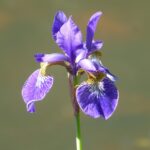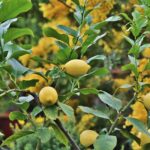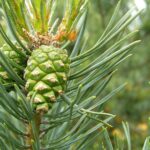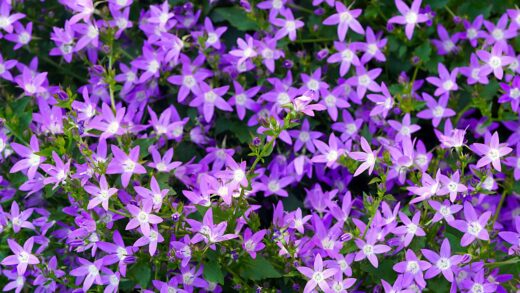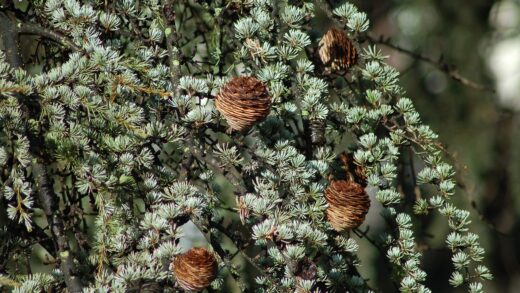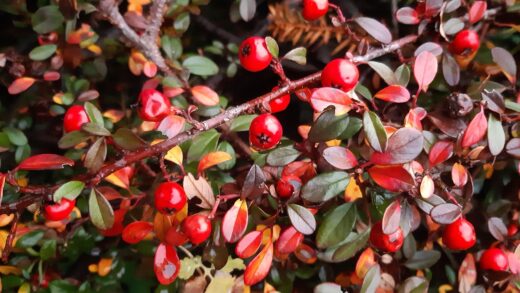The successful establishment of Madagascar periwinkle in any garden setting, whether in beds or containers, begins with a meticulous approach to planting. This process is more than simply placing a plant in the ground; it involves careful preparation of the site, proper timing, and a gentle hand to ensure the young plant experiences minimal stress. The foundation for a season of vibrant blooms is laid at this initial stage. Therefore, understanding the specific requirements for soil, spacing, and depth is crucial for giving the plant the best possible start. Rushing this step or overlooking key details can lead to a weak, underperforming plant that is more susceptible to pests and diseases.
Timing the planting correctly is paramount, as this tropical native is extremely sensitive to cold temperatures. Plants should only be moved into their final outdoor positions after all danger of frost has passed and the soil has had a chance to warm up significantly. Night-time temperatures should consistently be above 15 degrees Celsius to prevent shock and stunted growth. This typically means waiting until late spring or even early summer in many temperate climates. Whether you are working with nursery-bought seedlings or plants you have started yourself from seed, patience in waiting for reliably warm weather is a key ingredient for success.
The quality of the young plant itself also plays a significant role in its future performance. When selecting seedlings from a nursery, look for compact, bushy plants with healthy, dark green foliage and no signs of yellowing or pest damage. Avoid plants that are already tall and leggy, as they may have been grown in insufficient light and will struggle to establish a strong structure. Check the root system if possible; healthy roots should be white or light-coloured and well-distributed throughout the root ball, not dark, mushy, or tightly circling the bottom of the pot.
Ultimately, the goal of the planting process is to create a seamless transition for the plant from its container to its new home, encouraging its roots to quickly grow and establish themselves in the surrounding soil. This involves not only preparing the planting hole correctly but also handling the plant with care to avoid root damage. A well-planted Madagascar periwinkle will show signs of new growth within a week or two, quickly settling in and beginning the process of developing into a robust, floriferous specimen that will grace the garden with colour for months to come.
Preparing the planting site
Proper site preparation is a fundamental step that should never be skipped when planting Madagascar periwinkle. The chosen location must receive at least six to eight hours of direct sunlight daily, as light is the primary driver of its growth and flowering. Before planting, take the time to clear the area of all weeds and debris that would compete with the new plants for water and nutrients. Loosening the soil is also critically important for this species, which requires excellent drainage and aeration for its root system to thrive.
More articles on this topic
Use a garden fork or tiller to work the soil to a depth of at least 20 to 25 centimetres. This process breaks up compacted soil, improving its structure and allowing roots to penetrate more easily. This is also the ideal time to incorporate amendments that will enhance soil quality. For heavy clay soils, adding a generous amount of organic matter such as compost, aged pine bark, or coconut coir is essential to improve drainage and prevent waterlogging. In sandy soils, compost can help improve moisture and nutrient retention.
Once the soil has been loosened and amended, it should be raked smooth to create a level planting surface. At this stage, it is also beneficial to incorporate a balanced, slow-release granular fertilizer into the top few centimetres of the soil. This provides a foundational source of nutrients that will be available to the plants as they establish themselves. Follow the application rates recommended on the fertilizer package to avoid over-fertilizing, which can be just as harmful as under-fertilizing.
If you are planting in containers, the preparation process involves selecting an appropriate pot and potting medium. The container must have adequate drainage holes at the bottom to prevent water from pooling around the roots. Fill the container with a high-quality, well-draining potting mix, not garden soil. Lightly moisten the mix before planting, as this makes it easier to work with and ensures the root ball of the new plant is introduced to a hydrated environment, reducing transplant shock.
The planting process
When you are ready to plant your Madagascar periwinkle seedlings, the first step is to dig the planting holes. The holes should be spaced appropriately to allow for the plant’s mature size, which is typically 30 to 40 centimetres apart for most standard varieties. Proper spacing is crucial for ensuring good air circulation, which helps to prevent the development of fungal diseases later in the season. Each hole should be dug to be slightly wider than the plant’s root ball and just as deep, so the plant sits at the same level it was in its original container.
More articles on this topic
Before removing the plant from its pot, water it thoroughly about an hour beforehand. This helps to hydrate the plant and makes the root ball easier to remove intact, minimizing stress. To extract the plant, gently tip the container sideways and tap the bottom, supporting the base of the plant with your other hand. Avoid pulling the plant out by its stem, as this can cause significant damage. Once removed, gently inspect the root ball and loosen any tightly coiled or circling roots with your fingers to encourage them to grow outwards into the new soil.
Carefully place the plant into the prepared hole, ensuring that the top of the root ball is level with the surrounding soil surface. Planting too deep can lead to stem rot, while planting too high can cause the roots to dry out. Backfill the hole with the amended soil, gently firming it down around the root ball to eliminate any large air pockets. Be careful not to compact the soil too tightly, as this can impede water drainage and root growth.
Immediately after planting, water the area thoroughly and deeply. This initial watering is crucial as it helps to settle the soil around the roots and provides the moisture needed to reduce transplant shock. The goal is to provide enough water to saturate the root zone completely. For the first couple of weeks after planting, monitor the soil moisture closely and water as needed to keep the soil consistently moist but not waterlogged, giving the plant the best possible conditions to establish a strong root system.
Propagation from seed
Propagating Madagascar periwinkle from seed is a cost-effective way to produce a large number of plants, though it requires patience and attention to detail. The seeds need specific conditions to germinate successfully, including warmth and darkness. It is best to start the seeds indoors approximately 10 to 12 weeks before the last expected frost date in your region. This timing ensures that the seedlings will be a good size and ready for transplanting outdoors once the weather is reliably warm.
To begin, fill seed trays or small pots with a sterile, fine-textured seed-starting mix. Lightly moisten the mix before sowing the seeds. Place one to two seeds on the surface of the mix in each cell or pot, and then cover them with a thin layer of the mix, about 0.5 centimetres deep. Unlike many other seeds that require light to germinate, Madagascar periwinkle seeds need complete darkness. Therefore, after covering the seeds, it is essential to place the seed tray in a dark location or cover it with something opaque, like black plastic, to block out all light.
Maintaining the correct temperature is critical for germination. The ideal temperature for the soil is between 24 and 26 degrees Celsius. Using a heat mat under the seed tray is the most reliable way to maintain this consistent warmth. Keep the growing medium consistently moist but not saturated; a fine mist sprayer is ideal for watering to avoid dislodging the seeds. Germination can be slow and somewhat erratic, typically taking anywhere from one to three weeks.
Once the seedlings emerge, immediately remove the dark cover and move the tray to a location where it will receive bright, indirect light. A sunny windowsill or a spot under fluorescent grow lights is ideal. Continue to keep the soil moist and maintain good air circulation to prevent damping-off disease. When the seedlings have developed their second set of true leaves, they can be carefully transplanted into individual pots to continue growing until it is time to harden them off and plant them outdoors.
Propagation from cuttings
Propagating Madagascar periwinkle from stem cuttings is a fast and reliable method for creating new plants that are genetically identical to the parent. This is particularly useful for reproducing specific cultivars whose seeds may not grow true to type. The best time to take cuttings is during the late spring or summer when the parent plant is actively growing. This ensures that the stems are vigorous and have a higher chance of successfully rooting and developing into new plants.
Select healthy, non-flowering stems from the parent plant for your cuttings. Using a clean, sharp knife or pruning shears, cut a section of stem that is approximately 8 to 10 centimetres long. Make the cut just below a leaf node, which is the point on the stem where a leaf emerges. Carefully remove the leaves from the lower half of the cutting, leaving only two or three leaves at the top. This prevents the lower leaves from rotting when planted and reduces moisture loss from the cutting.
While not strictly necessary, dipping the cut end of the stem into a rooting hormone powder can significantly increase the success rate and speed of root development. Tap off any excess powder before planting. Insert the bottom half of the cutting into a small pot filled with a moist, well-draining rooting medium, such as a mix of perlite and peat moss or coarse sand. Ensure that at least one or two of the stripped leaf nodes are buried beneath the surface, as this is where new roots will form.
To create a humid environment that encourages rooting, you can cover the pot with a clear plastic bag or place it in a propagator. Position the cuttings in a warm location with bright, indirect light. Avoid direct sunlight, as this can scorch the delicate cuttings. Keep the rooting medium consistently moist but not waterlogged. Roots typically begin to form within three to four weeks. You can check for rooting by gently tugging on the cutting; if you feel resistance, roots have started to grow, and the new plant is on its way.









